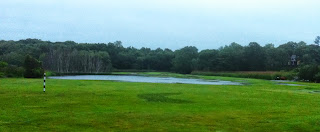Shop work update
George and the crew are working hard completing the winter
service and cleaning of our equipment.
This
involves engine service and maintenance, sharpening reels and blades, and
checking to see which units are likely to require significant repairs in the
future.
They spend extra time
cleaning, painting, and waxing the equipment, which helps preserve the value of
the fleet.
We also refurbished our
course accessories, such as benches, ball washers, water cooler stands, tee markers, flagsticks,
etc.
We have invested significant time and money in refurbishing the roller and fairway mowers. The roller is one of our most used units, and has a significant impact on golfers perception of the golf course. While we have a new fairway mower as a top priority in our capital equipment plan, we felt that investing in the current units would make them more reliable and productive in the short term, and our current primary mower will become a reliable backup once the replacement is approved.
I spent the majority of the
winter updating our maintenance programs, and reviewing the
latest research related to fertilizers, chemicals, and cultural programs. I focused my attention on fine tuning our maintenance programs
to provide healthier turf that will be more resilient and less dependent on chemical
control products. Key changes include a more
proactive approach to fertilizer chemical applications, and more aggressive cultural
programs on greens and tees.
Over the next few weeks we will complete the cleanup from
our winter projects and begin
the spring cleaning process.
Keep
checking the blog for updates on projects, maintenance updates, and coming
events that could affect the accessibility and condition of the golf course.














